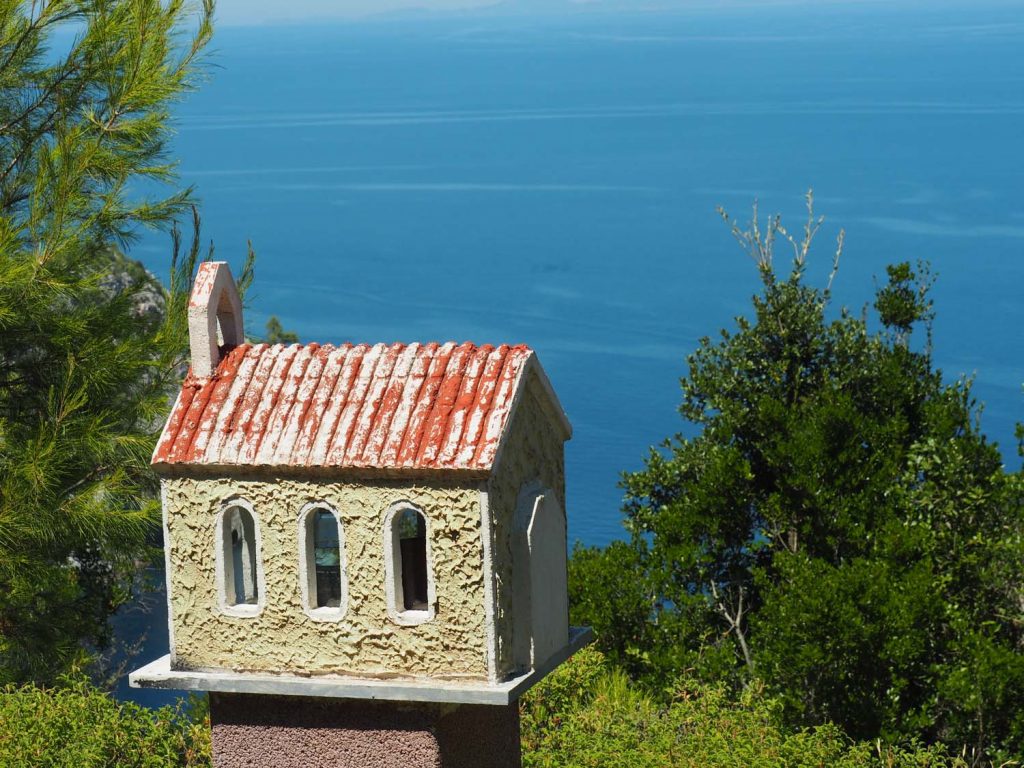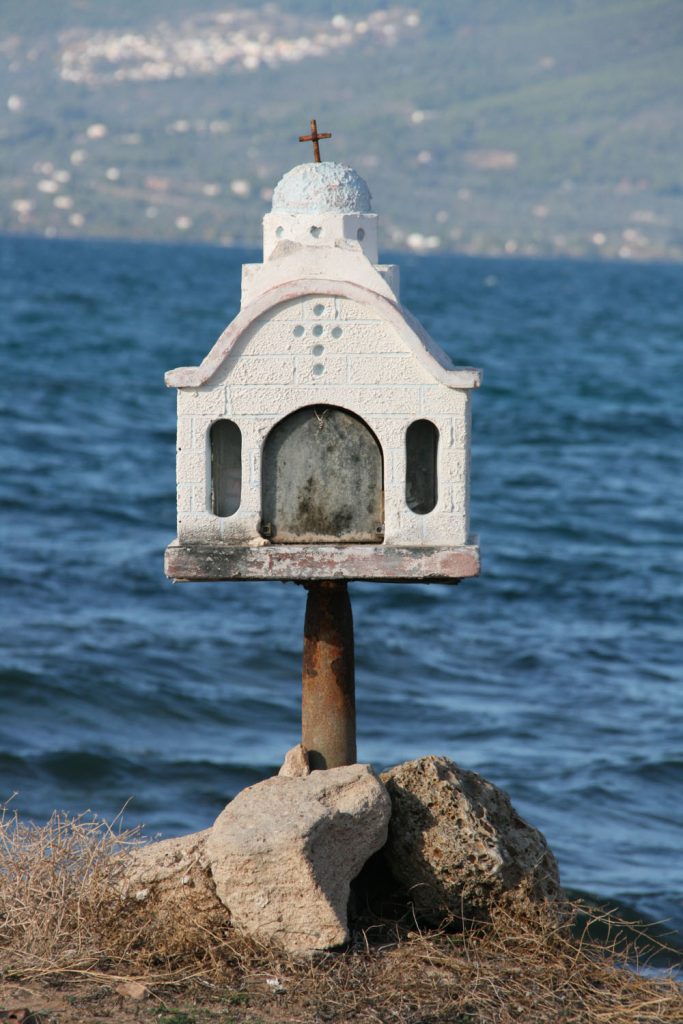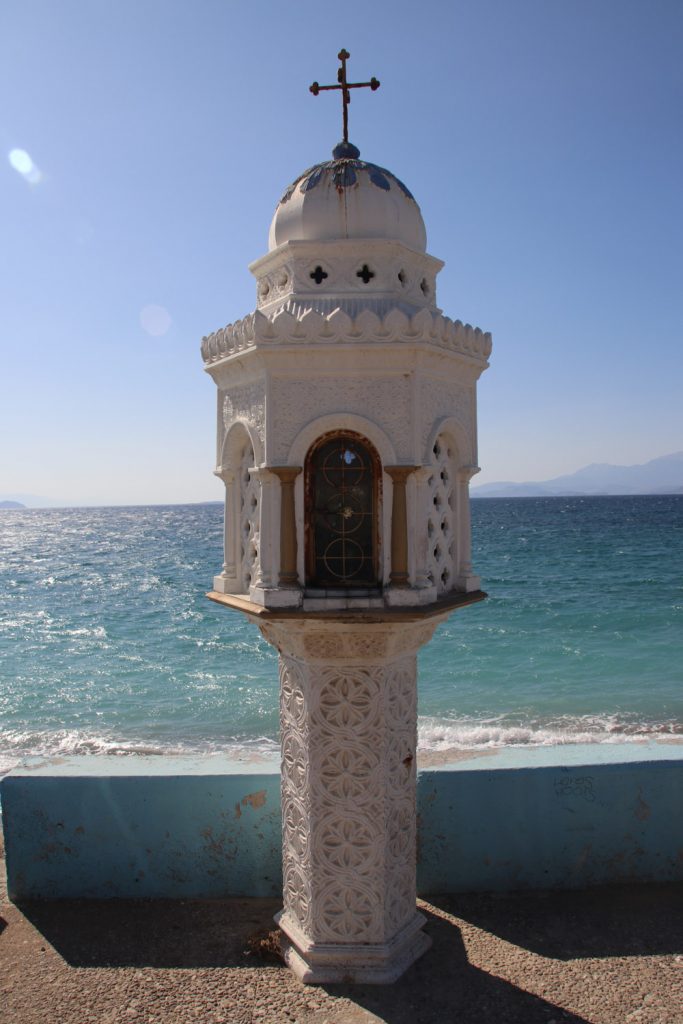The small roadside shrines scattered here and there, along the curvy roads in Greece, are an important part of the Greek culture.
History and Traditions of Kandylakia
During your trip to Greece you must have come across, photographed and wondered about these shrines. Known as kandylakia the roadside shrines are usually made of wood, stone, metal or concrete. Clearly visible on the edges of the narrow winding mountainous roads, they commemorate the lives both lost and saved.
 Over the years, in the farthest mountainous villages that can only be reached through narrow dark roads — many tales of frightening rides have been recounted over and over again. The challenging terrain marked with these shrines gives the traveler a sense of caution and an opportunity of spiritual reflection.
Over the years, in the farthest mountainous villages that can only be reached through narrow dark roads — many tales of frightening rides have been recounted over and over again. The challenging terrain marked with these shrines gives the traveler a sense of caution and an opportunity of spiritual reflection.
Some of these shrines are as old as the roads, built in the middle of nowhere with a flame of a candle burning inside.
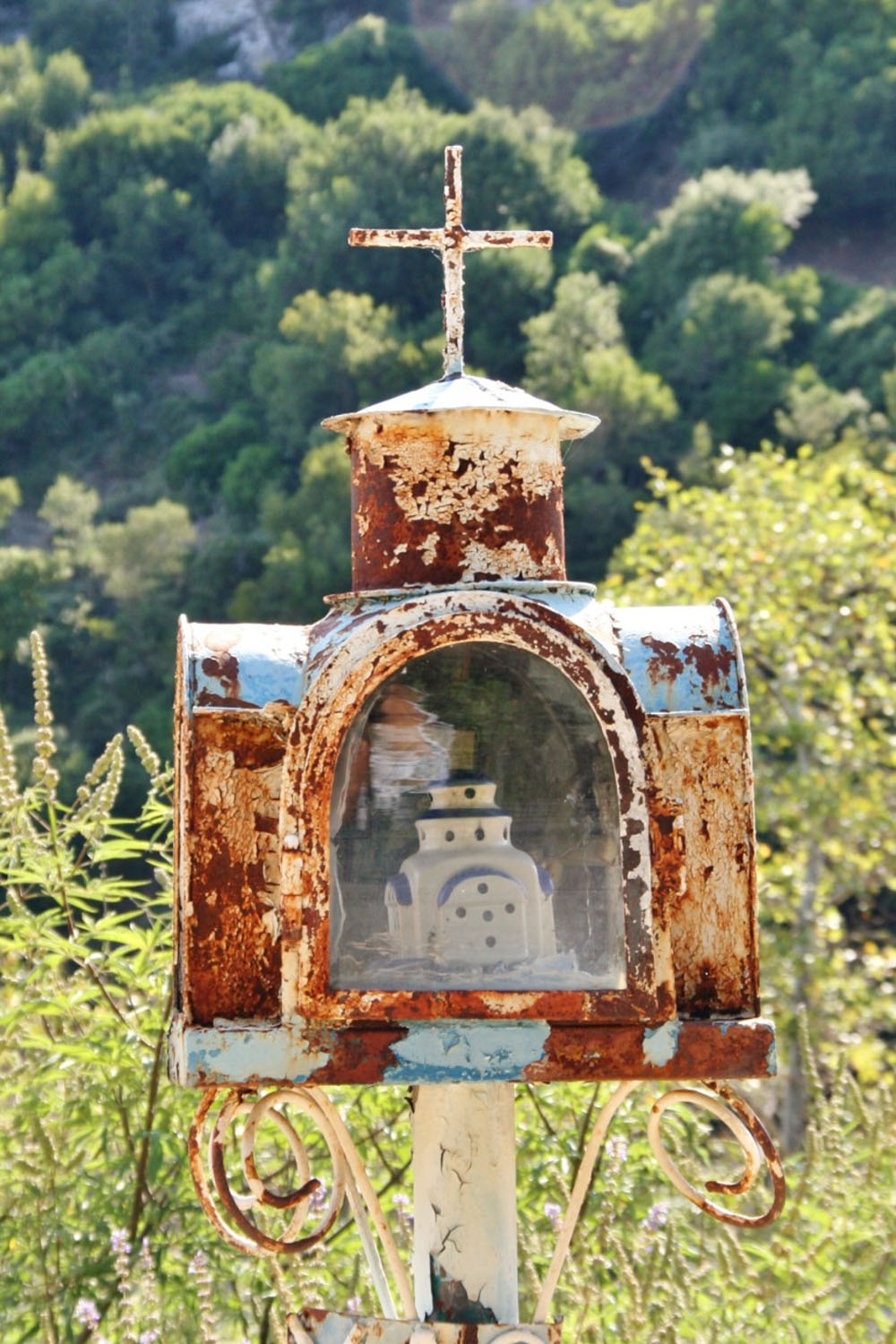 Greeks are known to be very religious people, which is reflected in Greece’s culture and traditions. Whether deeply religious or not, certain customs are greatly valued in most of the households. Kandylakia are emblems of an old tradition which is very much preserved until this day.
Greeks are known to be very religious people, which is reflected in Greece’s culture and traditions. Whether deeply religious or not, certain customs are greatly valued in most of the households. Kandylakia are emblems of an old tradition which is very much preserved until this day.
Unique characteristics of the roadside shrines
Although road accidents are mostly the reason for placing these shrines, on numerous occasions they are placed as a promise and a gesture of thankfulness. They celebrate miracles and those who survived dedicate a kandylaki to their patron saint. Another reason for these shrines is a way to indicate that there is a monastery or church in vicinity especially in less populated areas where the church might be completely out of sight.
Some churches which are located far away from the villages are now being locked up to protect them from theft. In such cases, small proskynitaria are erected in front of the church to allow the worshippers to light a candle and to say their prayers.
If you admire them closely, you will notice that every shrine has an icon of a saint. Sometimes, there is even more than one kandyli which is a floating wick oil lamp, flowers and personal items. It is a custom that every anniversary relatives and loved ones pay a visit to the shrine which draws upon the ecclesiastical tradition. This tradition represents the Greeks outlook on religion, family ties, remembrance of family history, culture and finally fate. These unique roadside shrines are there to remind us to appreciate every second and every opportunity to be alive.
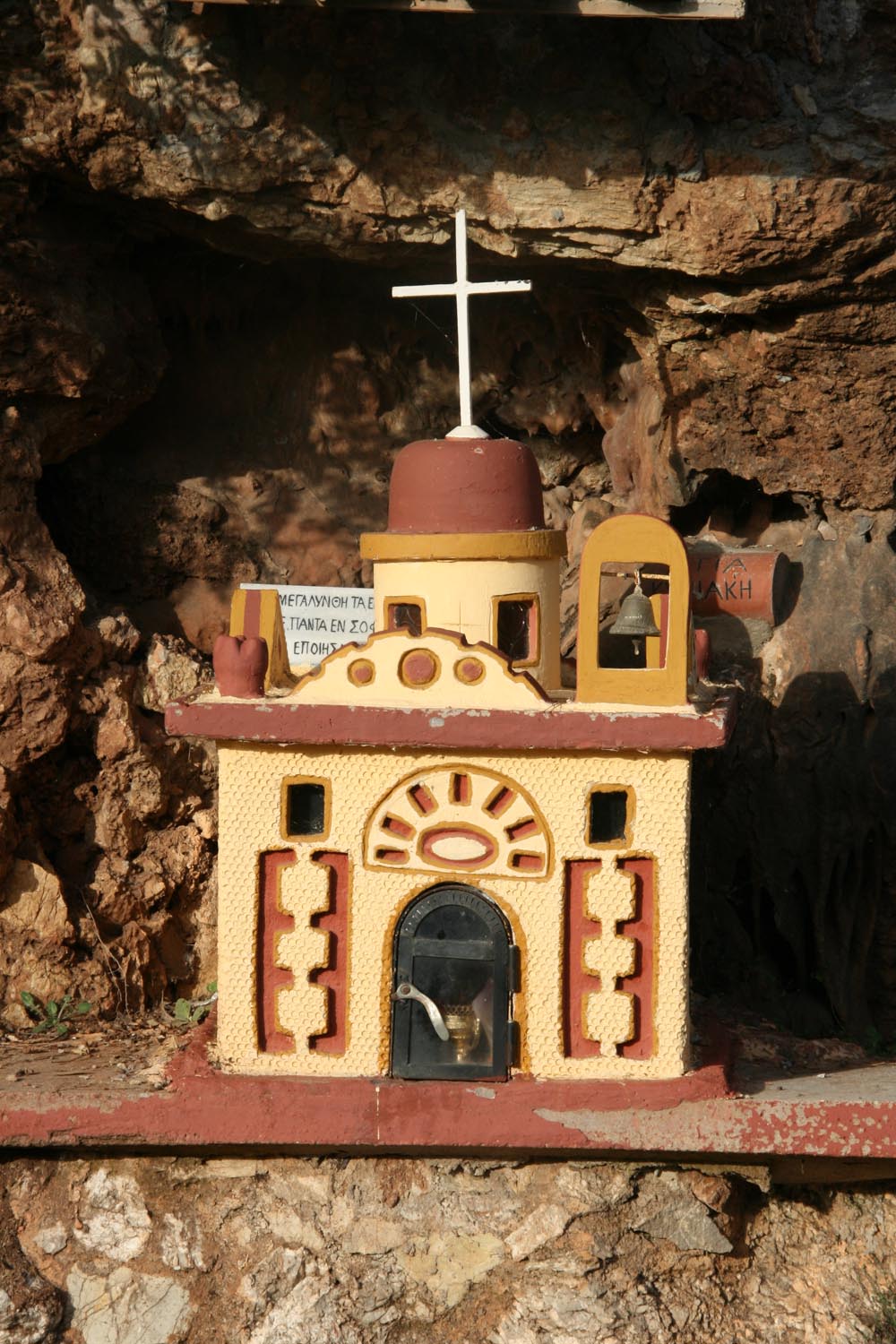 Next time you will pass a roadside shrine, you will know the history behind these impressive monuments that make up an important part of Greece’s rich and diverse culture. Have you seen a roadside shrine that left a lasting impression?
Next time you will pass a roadside shrine, you will know the history behind these impressive monuments that make up an important part of Greece’s rich and diverse culture. Have you seen a roadside shrine that left a lasting impression?


